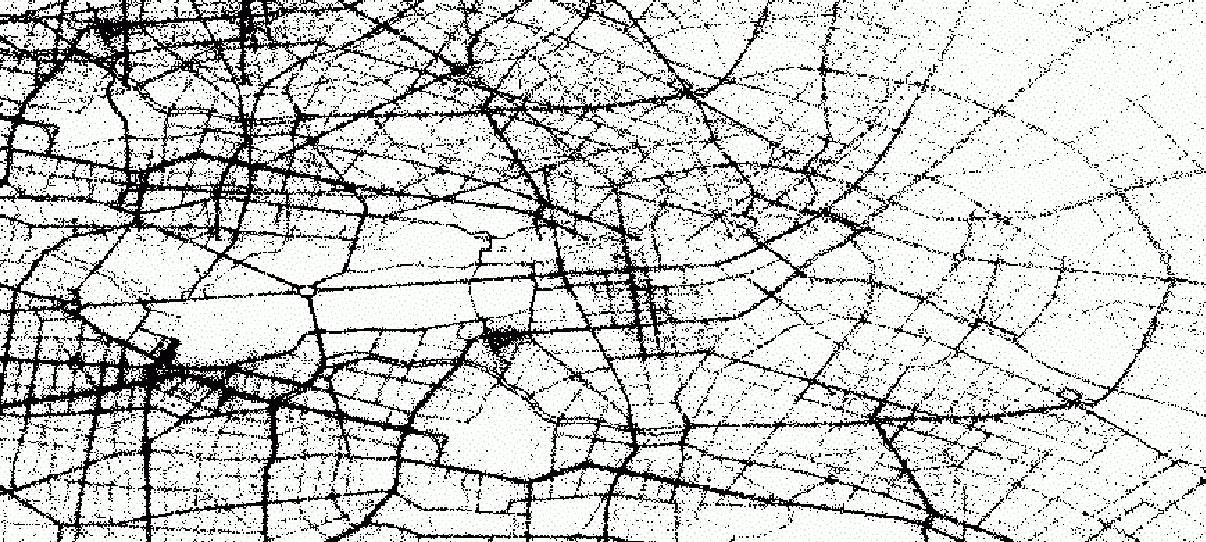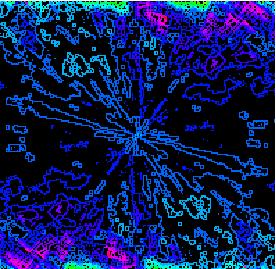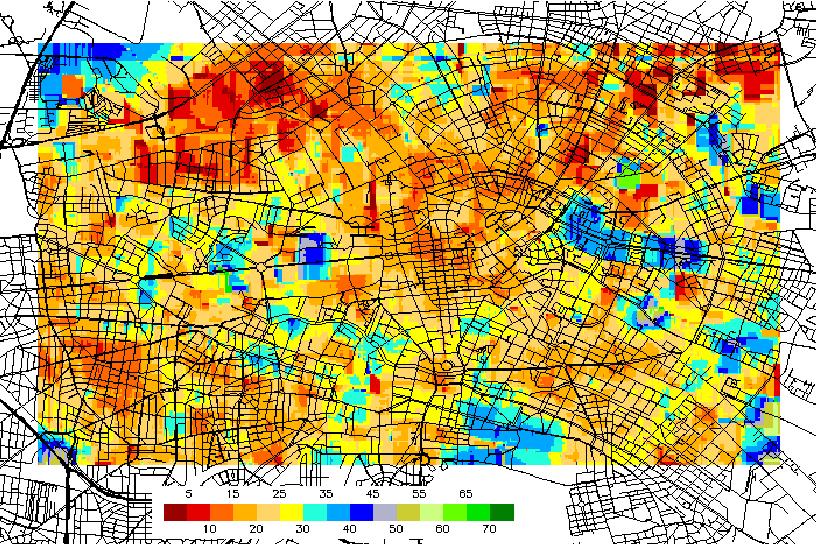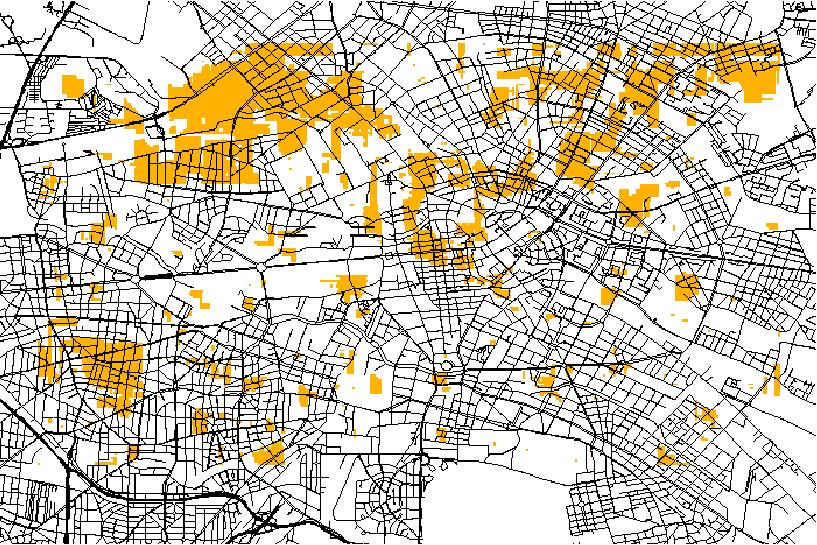Prediction of traffic states
The main goal of this joint project with the Institute of Transport Research, German Aerospace Center in Berlin started in December 2001 is the development of statistical methods and a complex software system to forecast the traffic situation in large urban areas on the basis of actual traffic data.
The data provided by the Institute of Transport Research comprise the real-time coordinates and velocities of about 300 test vehicles (taxis) equipped with GPS-Sensors circulating in the downtown of Berlin. The data were gathered over the period of the years 2001 - 2002.
In the first stage of the research, a spatial kriging-based extrapolation method has been developed to extrapolate the actual pointwise observed velocity field. This method is based on kriging with moving neighbourhood and external drift and makes use of the historical data that represent the mean velocities. The data are directed, non-stationary and non-isotropic. Thus, it is necessary to split the data in four datasets according to 4 sectors of directions and to estimate the mean field of velocities (external drift) for each of these 4 sectors separately.
Each dataset contains the GPS-signals originating from the test vehicles that move in a direction belonging to a certain sector of directions (e.g., north-west).
Based on actual traffic data, collected within the last half an hour, the field of residuals representing the deviations of the actual traffic situation from the mean velocity field is extrapolated.
Adding the mean velocities to the actual deviations, the actual velocity field can be easily used to extract regions with traffic jams and to compute the traveling time for a particular route in the city.
The methods described above were verified on the test example of a Boolean Model with a deterministic drift.
The second part of the project, started in January 2003, deals with modelling the actual field of velocity residuals by a random field model from stochastic geometry.
The conditional simulations of this random field based on the Markov Chain Monte Carlo techniques are the subject of the forthcoming part of the project. In the last stage, the space-time evolution of the random field of residuals resulting in the traffic forecasting will be considered.
Contact: Prof. Schmidt, Prof. Spodarev, and Hans Braxmeier




